- Home
- Jane Yolen
Dragon's Heart
Dragon's Heart Read online
Dragon's Heart
Book IV of the Pit Dragon Chronicles
Jane Yolen
Table of Contents
Title Page
Table of Contents
...
Copyright
Dedication
Map
Introduction
Preface
Home
1
2
3
4
5
6
7
8
9
10
11
12
13
14
15
16
17
18
19
20
21
The Rokk
22
23
24
25
26
27
28
29
Dragon's Heart
30
31
32
33
34
35
36
37
38
Excerpt from The Encyclopedia Galaxia
GRAPHIA
Houghton Mifflin Harcourt
Boston New York
Copyright © 2009 by Jane Yolen
All rights reserved. Published in the United States by Graphia,
an imprint of Houghton Mifflin Harcourt Publishing Company.
Originally published in hardcover in the United States by Harcourt
Children's Books, an imprint of Houghton Mifflin
Harcourt Publishing Company, 2009.
For information about permission to reproduce selections from this book,
write to Permissions, Houghton Mifflin Harcourt Publishing Company,
215 Park Avenue South, New York, New York 10003.
Graphia and the Graphia logo are registered trademarks of Houghton
Mifflin Harcourt Publishing Company.
www.hmhbooks.com
The text of this book is set in Fournier.
The Library of Congress has cataloged the hardcover edition as follows:
Yolen, Jane.
Dragon's heart / Jane Yolen.
p. cm.—(Pit dragon chronicles ; bk. 4)
Sequel to: A sending of dragons.
Summary: Having been presumed dead, Jakkin and Akki finally
return to Austar IV with newfound skills, and the knowledge
that what they have learned could either transform their planet
or destroy it.
ISBN 978-0-15-205919-4 hardcover
ISBN 978-0-547-39862-4 paperback
[1. Dragons—Fiction. 2. Fantasy.] I. Title.
PZ7.Y78Du 2009
[Fic]—dc22 2008025116
Illustration by Stephanie M. Cooper
Manufactured in the United States of America
DOC 10 9 8 7 6 5 4 3 2 1
4 5 0 0 2 7 1 0 3 9
For Michael Stearns, master of dragons and noodges.
For Jonathan Schmidt, master of the great blue pen.
For Adam Stemple, master of twisted plots.
For Deborah Turner Harris, first reader
and master of plot twists.
***
In memory of David Stemple, who had
wanted this one from the beginning.
***
And for all my fans who wrote demanding a fourth volume.
You are the ones who made this book happen.
***
Introduction
AUSTAR IV is the fourth planet of a seven-planet rim system in the Erato Galaxy. Once a Federation penal colony, marked KK29 on the convict map system, it is a semiarid metal-poor world with two moons.
Austar IV was originally chosen as a place to domicile convicts because of its difficult terrain and its daily cycle, which included a four-hour period during the night with cold so severe, humans could not remain outside without dying. The planet's lack of metal and the fact that its largest animals are huge dragons were considered additional reasons for making it a place to send sociopathic and dangerous convicts, those whose felonies were committed with violence (see holo map of the penal colonies, in the Criminal Activities section, vol. 10). Over the next two centuries, the progeny of the strongest and fittest convicts and wardens (the great-great-great-grandsons and -granddaughters of the original prison guards), now fairly stabilized at about a half million inhabitants, have managed to thrive through sheer grit. A caste/class system survived, long after the planet ceased being a penal colony, pitting the KKs—the prisoner class named after the brand on the prisoners' arms—against the master class. This caste system of masters and bonders was later institutionalized by Austarian law, with a bond price set as an entrance into the master class. Through the years, a small number of bonders rose by dint of hard work, talent, or careful savings into the master class, though most remained in bond (or fell back into bond) because of bad habits (doping, drinking, gambling), bad genetics, and bad luck.
Austar is covered by vast deserts, some of which are cut through by small, irregularly surfacing hot springs, several small sections of fenlands that have been drained in places to make arable farms, and zones of what were once thought to be impenetrable mountains. There are five major rivers: the Narrakka, Rokk, Brokk-bend, Kkar, and Left Forkk. There are also lesser rivers that run underground through the mountains.
Few plants grow in the desert; the combination of the heat of the day and the four hours of bone-chill cold known as Dark-After make only the hardiest plants viable. There are some fruit cacti and sparse, long-trunked palm trees known as spikka. The most populous plants on the planet are two wild-flowering bushes called burnwort and blisterweed (see color section) that grow in disturbed ground. The mountain vegetation, only recently studied, is varied and includes many edible fungi, berry bushes, and a low, oily grass called skagg, which, when boiled, produces a thin broth high in vitamin content. Skagg broth can also be frozen and sweetened with sweetroot for a dessert. Some of the farmers have made a good living cultivating offworld plants in hothouses, glass structures that are shut up at night with great wooden shutters to guard against the cold. The plants cultivated this way remain too expensive for all but the growing master class of Austarians. These plants include produce such as beans, squash, melons, rocket, mint, and hardy berries from Earth; picklers, stodgies, and sandwines from the Orion's Belt planets; bamboons, salt sawder, brown onions, and malt beans from the Mars Colony, and the like.
The planet hosts a variety of insect and pseudo-lizard life, the latter ranging from small rock-runners to elephant-sized "dragons" (see Animal Life holo sections, vol. 6). Unlike Earth reptilia, the Austarian dragon lizards are warm-blooded, with pneumaticized bones for reduction of weight and a keeled sternum where the flight muscles are attached. Membranous wings with jointed ribs fold back along the animals' bodies when the dragons are earth-bound. Stretched to their fullest, the wings of an adult dragon are twice its body size, enabling it to lift off the ground and fly above the mountains, where the prevailing winds aid it in soaring. The wings have "feathers," which are actually light scales that adjust to wind pressure. From claw to shoulder, some specimens of Austarian dragons have been measured at thirteen feet high. There is increasing evidence of a level 4+ intelligence and a color-coded telepathic communication among the largest beasts, though the recent embargo of the planet has effectively cut off all outside scientific study.
The Austarian dragons were almost extinct by the time the planet was first settled in 2303 by guards and convicts. The new population soon realized that dragons could be a rich source for both meat and leather, and so they began domesticating the few remaining cre
atures in dragon "nurseries." It soon became clear that there was another possibility for the dragons—being trained to fight one another in gaming arenas, which became known as "The Pits." And so an economic basis for Austar was laid down on the backs of these startling creatures. Quickly built were abattoirs for slaughtering the dragons culled for being too old or too timid for the fighting pits, meat shops for selling the dragon-based food, clothiers to create wear from the leather, jewelers working with the talons, bones, and scales. Veterinarians to keep the beasts healthy. Farms to grow food for them. The dragon nurseries needed cooks, trainers, barn boys, eventually becoming the greatest employer on the planet, as well as the biggest money maker. Within a generation, betting syndicates developed, and Federation starship crews on long rim-world voyages began to frequent the planet on gambling forays. Around the pits grew up bars, eateries, inns, as well as baggeries run by beautiful women. And of course a police force to oversee it all. Great fortunes were made by pit owners and nursery men alike. And some of the wardens.
Under pressure from the Federation, the Austarians then drafted a Protectorate constitution, spelling out the Federation's administrative role in the planet's economy, including laws guaranteeing humane treatment of the dragons, regulation of the gambling by offworlders, and the payment of taxes, which the Austarians call tithing, on gambling monies. In exchange, the Federation built, ran, and policed a series of starship landing bases on the planet, outside of the two cities, Krakkow and The Rokk. There the starship crews brought in money, barter goods, even banned items such as guns, offworld seeds and seedlings, and parts for trucks and cars. They transported visits by DDWPB—Doctors and Dentists Without Planetary Borders. Within the next several generations, a rich class of masters developed, far removed from their convict and warden ancestors.
In the mid 2500s, this cozy relationship with the Federation came to an abrupt halt. Disgruntled bonders became understandably angry at their continuing low place in Austarian society and the inequities visited upon their class. There was a huge and growing divide between the rich and the poor. Rebellious bonders began to foment a revolution, which culminated in a series of violent confrontations. They improvised exploding devices strong enough to bring down buildings. The worst of these was the bombing of Rokk Major, the greatest of the gaming pits on the planet. Thirty-seven people were killed outright; twenty-three died of their wounds in the months that followed. Hundreds of other people, both Austarians and offworlders, were seriously injured. With Austarian cooperation, the most violent of the offenders were caught and sent offplanet to other Federation penal colonies. The others were incorporated back into Austarian society.
After a year of further violent conflict, the Austarian senate voted to free all bonders, which effectively stopped the rebellion. But the planet had already been embargoed, for a term of not more than fifty years, until the Federation judged Austar IV safe again for offworld travelers. This embargo keeps all official ships from landing, except for the occasional medical ships, which means that Austar IV is without sanctioned metal replacement parts or technical assistance for the foreseeable future. Infrequent pirate ships have managed to slip through the embargo lines. Intercepted coded transmissions to and from those ships and eyewitness accounts by the doctors have indicated there had been a further power struggle between the classes. Frequent references to "dragonmen," "trogs," and "sendings" remain unclear. The complete story of Austar IV will probably not be understood until the embargo is lifted and a petition from the planet for a reversal is successful in Federation courts. Only then will the Austarians be able to speak for themselves.
—excerpt from The Encyclopedia Galaxia,
thirty-third edition, vol. 1: Aaabarker—Austar
Preface
At the end of book 3, A Sending of Dragons, Senator Golden has located Jakkin and Akki in a meadow near a high waterfall. Led to them by Heart's Blood's now full-grown hatchlings, Golden has set his copter down and confronted the two runaway teens. He seems not entirely surprised that they are still alive. They'd been accused of being part of a rebel cell and helping in the appalling bombing of the Rokk Major pit, but had in fact been infiltrating the rebels on Golden's orders. Trying to escape, they were helped, surprisingly, by the old bonder Likkarn. After being left for dead in a mountain shoot-out, the two had managed to live in mountain caves for a year. There they discovered new powers, dragon powers—the ability to stay out in the cold of Dark-After, and a telepathic bond with dragons and each other. Near the end of that year, they'd been captured by trogs —cave people. Beaten, threatened, they finally escaped through an underground river to the waterfall and meadow, along with two of the trog dragons: a hatchling and a full-grown female they have named Auricle.
Book 3 ended this way:
"Why are you here?" Jakkin asked Golden. "Why now?"
"To find you, obviously, and bring you back."
Akki smiled but Jakkin's eyes narrowed. "Bring us back how? As friends? As prisoners? As criminals? As runaways?"
"Not exactly as prisoners, otherwise I'd be home and the wardens would be here. But not exactly free, either, though all bonders are now technically free. Let's say you are wards of the state."
At their puzzled glances, Golden added, "You see, I ran the investigation of your case from my hospital bed—when Dr. Henkky allowed me!—and cleared you two of the charges of planting the bomb at Rokk Major."
"I don't understand," Akki said. "If you've cleared us of the pit bombing and all bonders are free, why aren't we?"
"Because, my dear Akki," said Golden, putting his hands on her shoulders, "I cleared the names of a romantic young dead couple. Once you return alive—well, there are bound to be some difficult questions, which as my wards and prisoners, you won't be obliged to answer."
"Then what comes next?" Jakkin asked.
"I'll take you back to the nursery farm now," said Golden. "If you're ready to come."
"We're ready," Jakkin said.
Akki nodded her agreement and reached down to pick up the hatchling who had been lying against her ankles. The hatchling snuggled into her arms, its tail looped around her wrist.
Jakkin watched as Golden and Akki climbed into the copter. He walked over to Auricle and placed his hands on either side of her broad head.
"Thou beauty," he sent. "Try thy wings once more and, if thee will, follow the other dragons to the place where we live, the nursery. It will be a safe place for thee and thy eggs."
He didn't wait for an answer. Whether she came to the farm or stayed in the world, she was free of the tyranny of the trogs in the mountain caves. That was all that mattered now.
Climbing into the copter, Jakkin sat behind Akki in a seat that seemed much too soft for comfort. Golden turned and showed him how to buckle his seat belt across his lap. Then Golden turned back to the copter console. As the great machine engine started up, the noise was deafening.
Golden shouted, his voice barely rising above the churring of the rotors. "We won't be able to talk much until we're down again. Too loud." He pointed to the ceiling, then bent to fiddle with the controls, a panel of winking, blinking lights that reminded Jakkin of dragons' eyes.
Jakkin put his hand on Akki's shoulder and their minds touched, a clear, clean, silent meeting. Then he looked out the window as the copter rose into the air. Austar stretched out below him in great swatches of color. He could see the dark mountain with its sharp, jagged peaks and the massive gray cliff faces pocked with caves. He could see tan patches of desert where five ribbons of blue water fanned out from the darker blue of a pool, and the white froth of the waterfall. Running into the waterfall was a blue-black river that gushed from the mountainside like blood from a wound.
He sent a message to Akki full of wonder and light. "This ... this is true dragon sight, Akki. We're like dragons in flight above our world."
Mind-to-mind they talked of it all the way back to the nursery and home.
Home
1
"Home ..." Akki sent Jakkin the single word as they landed, her mind decorating the sending with a picture of the nursery: gray stone surrounded by red sky, which lay beyond the sand and grit. She pushed a strand of dark hair back from her forehead and pressed her face against the window.
"Home," Jakkin answered, his sending the blue of the five rivers twisting through tan sands. A cooler reaction, almost as if he were afraid. Only he wasn't afraid, just being cautious. It was an old habit, but a good one.
As Golden's slim hands danced across the console of lights, the blades slowed, then stilled. "Good landing," Golden said. Then he turned and grinned at them. "Even if you two don't know the difference."
Soon the dust settled. A minute more and Jakkin could see through the grit that the landscape was neither as red and gray—or as tan and blue—as their sendings.
Akki laughed—a soft, delightful sound—and Jakkin was reminded of other times she'd sounded like that. Not many recently; hardly any when they were on the run in the mountains, and none at all in the caves of the trogs. But he remembered them all.
Overhead, Heart's Blood's five—Sssargon, Sssasha, Trisss, Trisssha, and Trissskkette—wheeled away, disappearing behind a cluster of trees. In his mind, Jakkin heard them bidding a good-bye, their sendings as bright and fluffy as clouds.
"Sssargon goesss. Sssargon fliesss high," sent the largest, and only male. As ever, his sendings were full of himself. And full of what he was doing now. Dragon time was always now. They could remember a trainer, their hatchlings, their nest. They could be taught enough movements to fight warily in a pit. They could recall where a particularly fine patch of wort existed. But otherwise they lived in the now. Still, they'd been able to hold on to enough to bring Golden to the rescue, to guide him to where Jakkin and Akki had been on the run from the trogs who slaughtered dragons in their caves.

 The Pictish Child
The Pictish Child Cards of Grief
Cards of Grief A Plague of Unicorns
A Plague of Unicorns Heart's Blood
Heart's Blood Mapping the Bones
Mapping the Bones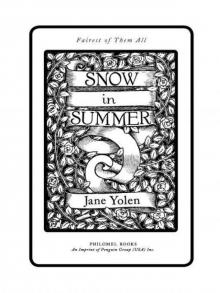 Snow in Summer
Snow in Summer Merlin's Booke: Stories of the Great Wizard
Merlin's Booke: Stories of the Great Wizard Centaur Rising
Centaur Rising The One-Armed Queen
The One-Armed Queen Dragon's Blood
Dragon's Blood Boots and the Seven Leaguers
Boots and the Seven Leaguers The Girl Who Cried Flowers and Other Tales
The Girl Who Cried Flowers and Other Tales The Wizard of Washington Square
The Wizard of Washington Square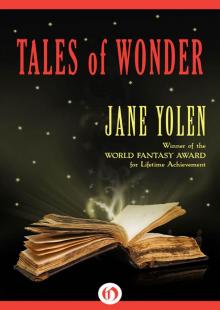 Tales of Wonder
Tales of Wonder The Emerald Circus
The Emerald Circus Sister Light, Sister Dark
Sister Light, Sister Dark Twelve Impossible Things Before Breakfast
Twelve Impossible Things Before Breakfast The Devil's Arithmetic
The Devil's Arithmetic Trash Mountain
Trash Mountain The Dragon's Boy
The Dragon's Boy A Sending of Dragons
A Sending of Dragons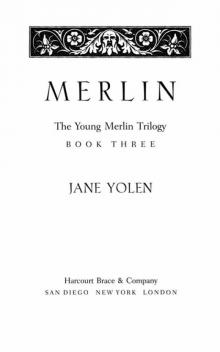 The Young Merlin Trilogy
The Young Merlin Trilogy The Last Tsar's Dragons
The Last Tsar's Dragons Curse of the Thirteenth Fey: The True Tale of Sleeping Beauty
Curse of the Thirteenth Fey: The True Tale of Sleeping Beauty The Bagpiper's Ghost
The Bagpiper's Ghost Nebula Awards Showcase 2018
Nebula Awards Showcase 2018 Hobby
Hobby How to Fracture a Fairy Tale: 2
How to Fracture a Fairy Tale: 2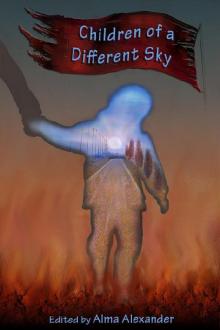 Children of a Different Sky
Children of a Different Sky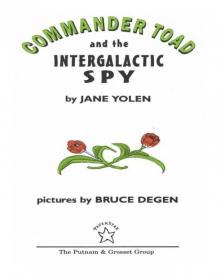 Commander Toad and the Intergalactic Spy
Commander Toad and the Intergalactic Spy Wizard’s Hall
Wizard’s Hall The Transfigured Hart
The Transfigured Hart Dragonfield: And Other Stories
Dragonfield: And Other Stories The Magic Three of Solatia
The Magic Three of Solatia The Great Alta Saga Omnibus
The Great Alta Saga Omnibus Favorite Folktales From Around the World
Favorite Folktales From Around the World Passager
Passager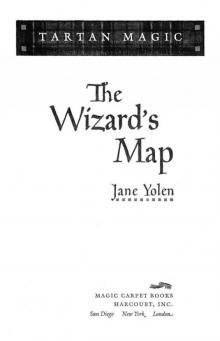 The Wizard's Map
The Wizard's Map The Last Changeling
The Last Changeling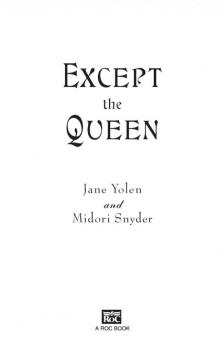 Except the Queen
Except the Queen Snow in Summer: Fairest of Them All: Fairest of Them All
Snow in Summer: Fairest of Them All: Fairest of Them All The Midnight Circus
The Midnight Circus Atalanta and the Arcadian Beast
Atalanta and the Arcadian Beast Finding Baba Yaga
Finding Baba Yaga The Rogues
The Rogues Dragon's Boy
Dragon's Boy The Hostage Prince
The Hostage Prince Wizard of Washington Square
Wizard of Washington Square How to Fracture a Fairy Tale
How to Fracture a Fairy Tale Magic Three of Solatia
Magic Three of Solatia Curse of the Thirteenth Fey
Curse of the Thirteenth Fey My Brothers' Flying Machine
My Brothers' Flying Machine Not One Damsel in Distress
Not One Damsel in Distress Merlin's Booke
Merlin's Booke Pay the Piper: A Rock 'n' Roll Fairy Tale
Pay the Piper: A Rock 'n' Roll Fairy Tale Merlin
Merlin Troll Bridge
Troll Bridge Pay the Piper
Pay the Piper Dragonfield
Dragonfield Sister Emily's Lightship
Sister Emily's Lightship Hippolyta and the Curse of the Amazons
Hippolyta and the Curse of the Amazons Prince Across the Water
Prince Across the Water Dragon's Heart
Dragon's Heart The Seelie King's War
The Seelie King's War Among Angels
Among Angels Queen's Own Fool
Queen's Own Fool